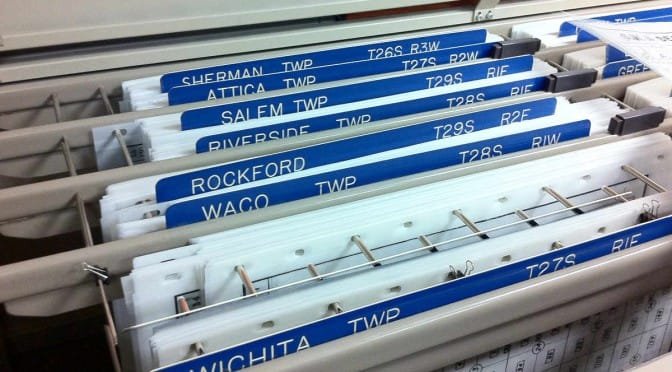As Kansas prepares for a legislative session that must find ways to balance a budget in the face of declining revenues, not all solutions are being considered.
Generally, the choices are presented as either raising revenues or cutting services. An example comes from H. Edward Flentje of Wichita State University. In a recent op-ed, he presents two solutions: (a) raising more revenue, by canceling the recently-passed tax cuts and retaining the current sales tax rate hike instead of letting it expire, or (b) cutting services. (H. Edward Flentje : State facing fiscal cliff, December 16, 2012 Wichita Eagle)
In the Kansas City Star, Steve Rose made a similar argument.
I hope that “cutting services” means cutting spending on services, not the actual level of services the state provides, although that could probably use some trimming, too.
How much spending does the state need to cut? Kansas Policy Institute has calculated that a one-time spending cut of 8.5 percent, followed by spending growth of four percent per year, would produce a balanced budget with ending balances.
Does anyone think this goal can’t be met? If not, then perhaps cutting four percent in each of the next two years could be a goal.
But either way, we can cut spending while maintaining services people have become accustomed to expect from government. Remaking government is a way to do this. We can make government more efficient, despite the claims that it is impossible to do so.
As an example, in 2010 the Wichita school district saved $2.5 million per year by adjusting school starting times, thereby saving on transportation costs. This was after district officials claimed — repeatedly — there was nothing they could cut. Spending had already been “cut to the bone,” officials said.
When we see incidents like this, the governing body trumpets the savings, and then, unfortunately, often stops looking for savings. But we need to keep looking. An example of a way to save money is school choice.
School choice saves states money
While proponents of public school spending argue that school choice programs drain away dollars from what they claim are underfunded public schools, this is not the case.
In 2007 The Friedman Foundation for Educational Choice released the study School Choice by the Numbers: The Fiscal Effect of School Choice Programs, 1990-2006. According to the executive summary: “Every existing school choice program is at least fiscally neutral, and most produce a substantial savings.”
How can this be? The public school spending lobby, which in Kansas is primarily the Kansas National Education Association (KNEA, the teachers union) and the Kansas Association of School Boards (KASB), would have us believe that educational freedom would kill public education. They say that school choice program drain scarce resources from the public school system.
But when researchers looked at the actual effects, they found this: “In nearly every school choice program, the dollar value of the voucher or scholarship is less than or equal to the state’s formula spending per student. This means states are spending the same amount or less on students in school choice programs than they would have spent on the same students if they had attended public schools, producing a fiscal savings.”
So at the state level, school choice programs save money. They don’t cost money to implement; they save money.
Further research on school choice programs funded through tax credits confirms this.
Other ways to save
In 2011 the Kansas Legislature lost three opportunities to save money and improve the operations of state government. Three bills, each with this goal, were passed by the House of Representatives, but each failed to pass through the moderate-controlled Senate, or had its contents stripped and replaced with different legislation.
Each of these bills represents a lost opportunity for state government services to be streamlined, delivered more efficiently, or measured and managed. These goals, while always important, are now essential for the success of Kansas government and the state’s economy.
Kansas Streamlining Government Act
HB 2120, according to its supplemental note, “would establish the Kansas Streamlining Government Act, which would have the purpose of improving the performance, efficiency, and operations of state government by reviewing certain state agencies, programs, boards, and commissions.” Fee-funded agencies — examples include Kansas dental board and Kansas real estate commission — would be exempt from this bill.
In more detail, the text of the bill explains: “The purposes of the Kansas streamlining government act are to improve the performance, streamline the operations, improve the effectiveness and efficiency, and reduce the operating costs of the executive branch of state government by reviewing state programs, policies, processes, original positions, staffing levels, agencies, boards and commissions, identifying those that should be eliminated, combined, reorganized, downsized or otherwise altered, and recommending proposed executive reorganization orders, executive orders, legislation, rules and regulations, or other actions to accomplish such changes and achieve such results.”
In testimony in support of this legislation, Dave Trabert, President of Kansas Policy Institute offered testimony that echoed findings of the public choice school of economics and politics: “Some people may view a particular expenditure as unnecessary to the fulfillment of a program’s or an agency’s primary mission while others may see it as essential. Absent an independent review, we are expecting government employees to put their own self-interests aside and make completely unbiased decisions on how best to spend taxpayer funds. It’s not that government employees are intentionally wasteful; it’s that they are human beings and setting self-interests aside is challenge we all face.”
The bill passed the House of Representatives by a vote of 79 to 40. It was referred to the Senate Committee on Federal and State Affairs, where it did not advance. HB 2120 died in a senate committee chaired by Pete Brungardt, who was defeated in August.
Privatization and public-private partnerships
Another bill that did not advance was HB 2194, which in its original form would have created the Kansas Advisory Council on Privatization and Public-Private Partnerships.
According to the supplemental note for the bill, “The purpose of the Council would be to ensure that certain state agencies, including the Board of Regents and postsecondary educational institutions, would: 1) focus on the core mission and provide goods and services efficiently and effectively; 2) develop a process to analyze opportunities to improve efficiency, cost-effectiveness and provide quality services, operations, functions, and activities; and 3) evaluate for feasibility, cost-effectiveness, and efficiency opportunities that could be outsourced. Excluded from the state agencies covered by the bill would be any entity not receiving State General Fund or federal funds appropriation.”
This bill passed by a vote of 68 to 51 in the House of Representatives. It did not advance in the Senate, falling victim to a “gut-and-go” maneuver where its contents were replaced with legislation on an entirely different topic. Steve Morris, president of the Kansas Senate and a member of the moderate coalition, chaired the committee that killed this legislation. He won’t be in the Senate next year.
Performance measures
Another bill that didn’t pass the entire legislature was HB 2158, which would have created performance measures for state agencies and reported that information to the public. The supplemental note says that the bill “as amended, would institute a new process for modifying current performance measures and establishing new standardized performance measures to be used by all state agencies in support of the annual budget requests. State agencies would be required to consult with representatives of the Director of the Budget and the Legislative Research Department to modify each agency’s current performance measures, to standardize such performance measures, and to utilize best practices in all state agencies.” Results of the performance measures would be posted on a public website.
This bill passed the House of Representatives by a nearly unanimous vote of 119 to 2, with Wichita’s Nile Dillmore and Geraldine Flaharty the two nay votes.
Opposition to these bills from Democrats often included remarks on the irony of those who were recently elected on the promise of shrinking government now proposing to enlarge government through the creation of these commissions and councils. These bills, however, proposed to spend modest amounts increasing the manageability of government, not the actual range and scope of government itself. As it turns out, many in the legislature — this includes Senate Republicans who initiated or went along with the legislative maneuvers that killed these bills — are happy with the operations of state government remaining in the shadows.
HB 2158 was victim of a “gut-and-go” maneuver in a committee chaired by Carolyn McGinn, another member of the moderate coalition. She will be returning to the senate next year, but probably won’t have the ability to stop legislation like this.




